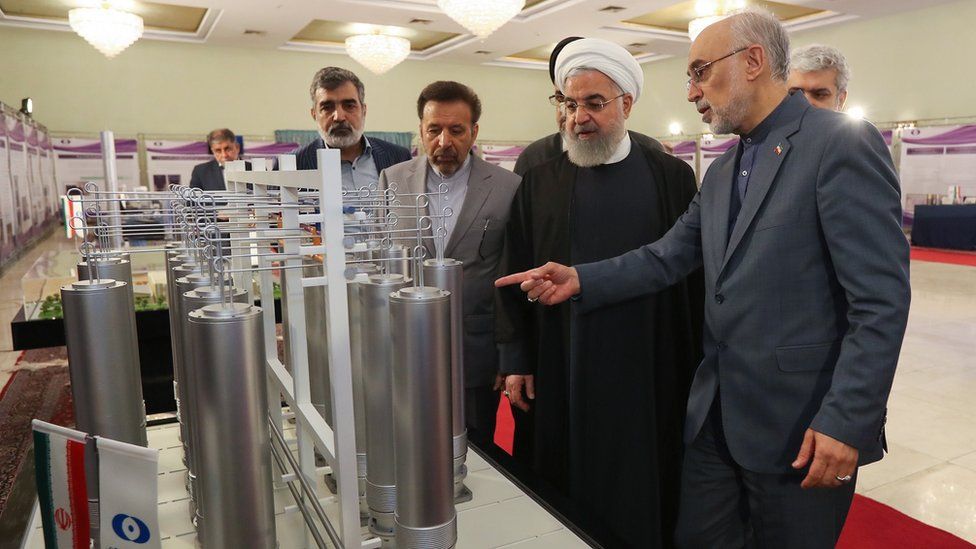The United States has joined talks in Vienna aimed at reviving the Iran nuclear deal, which the Trump administration abandoned in 2018.
President Joe Biden has said he wants to return to the landmark accord.
But the six remaining state parties need to find a way for him to lift the sanctions imposed by his predecessor and for Iran to return to the agreed limits on its nuclear programme.

Iran has said it will not meet the US face to face until that happens.
The top US officials attending the meeting in Austria are reportedly based in a different hotel to the one hosting the meeting of the delegations from Iran and the other world powers – China, France, Germany, Russia and the UK. European officials are acting as intermediaries.
“We don’t underestimate the scale of the challenges ahead,” US state department spokesman Ned Price told reporters on Monday.
“These are early days. We don’t anticipate an early or immediate breakthrough, as these discussions, we fully expect, will be difficult.”

Iran nuclear crisis: The basics
- World powers don’t trust Iran: Some countries believe Iran wants nuclear power because it wants to build a nuclear bomb – it denies this.
- So a deal was struck: In 2015, Iran and six other countries reached a major agreement. Iran would stop some nuclear work in return for an end to harsh penalties, or sanctions, hurting its economy.
- What is the problem now? Iran re-started banned nuclear work after former US President Donald Trump pulled out of the deal and re-imposed sanctions on Iran. Even though new leader Joe Biden wants to rejoin, both sides say the other must make the first move.
Mr Biden’s special envoy for Iran, Robert Malley, told PBS Newshour last week that his goal was to “see whether we could agree on a road map back to compliance for both sides”.
He added: “The United States knows that, in order to get back into compliance, it’s going to have to lift those sanctions that are inconsistent with the deal that was reached with Iran.”

When asked about the comments at a news conference in Tehran on Tuesday, Iranian government spokesman Ali Rabiei said he “saluted” them.
“We find this position realistic and promising,” he added. “It could be the start of correcting the bad process that had taken diplomacy to a dead end.”
Mr Rabiei reiterated that Iran was “ready to mutually return to all its obligations in the shortest possible time after verifying the fulfilment of the obligations by the other parties”.
The nuclear deal, known as the Joint Comprehensive Plan of Action (JCPOA), has been in intensive care since Donald Trump pulled the US out of it.
He said it was based on “a giant fiction that a murderous regime desired only a peaceful nuclear energy programme” and reinstated crippling economic sanctions in an attempt to compel Iran to negotiate a replacement.
Iran, which insists it does not want nuclear weapons, refused to do so and retaliated by rolling back a number of key commitments under the accord.

Since the end of the year it has accelerated the breaches in an attempt to increase pressure on the US. They have included operating advanced centrifuges to enrich uranium, resuming enrichment to 20% concentration of the most fissile U-235 isotope, and building a stockpile of that material.
The nuclear deal only allows Iran to produce and store limited quantities of uranium enriched up to 3.67% concentration, which can be used to produce fuel for commercial nuclear power plants. Uranium that is enriched to 90% or more can be used to make nuclear weapons.
Iran’s government has said the steps were taken to comply with a law passed by parliament following the assassination in November of the top nuclear scientist, Mohsen Fakhrizadeh, which Iranian officials blamed on Israel.